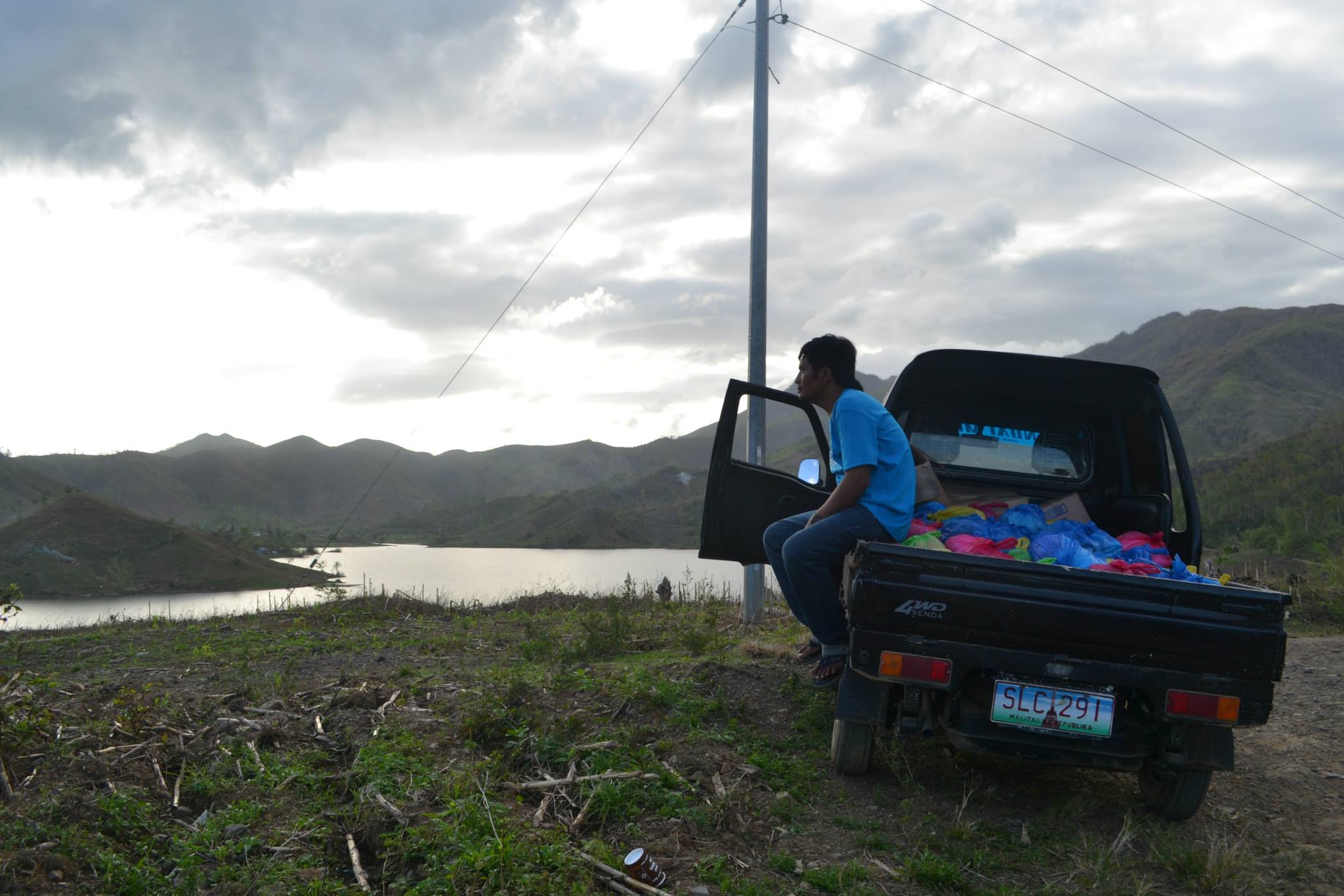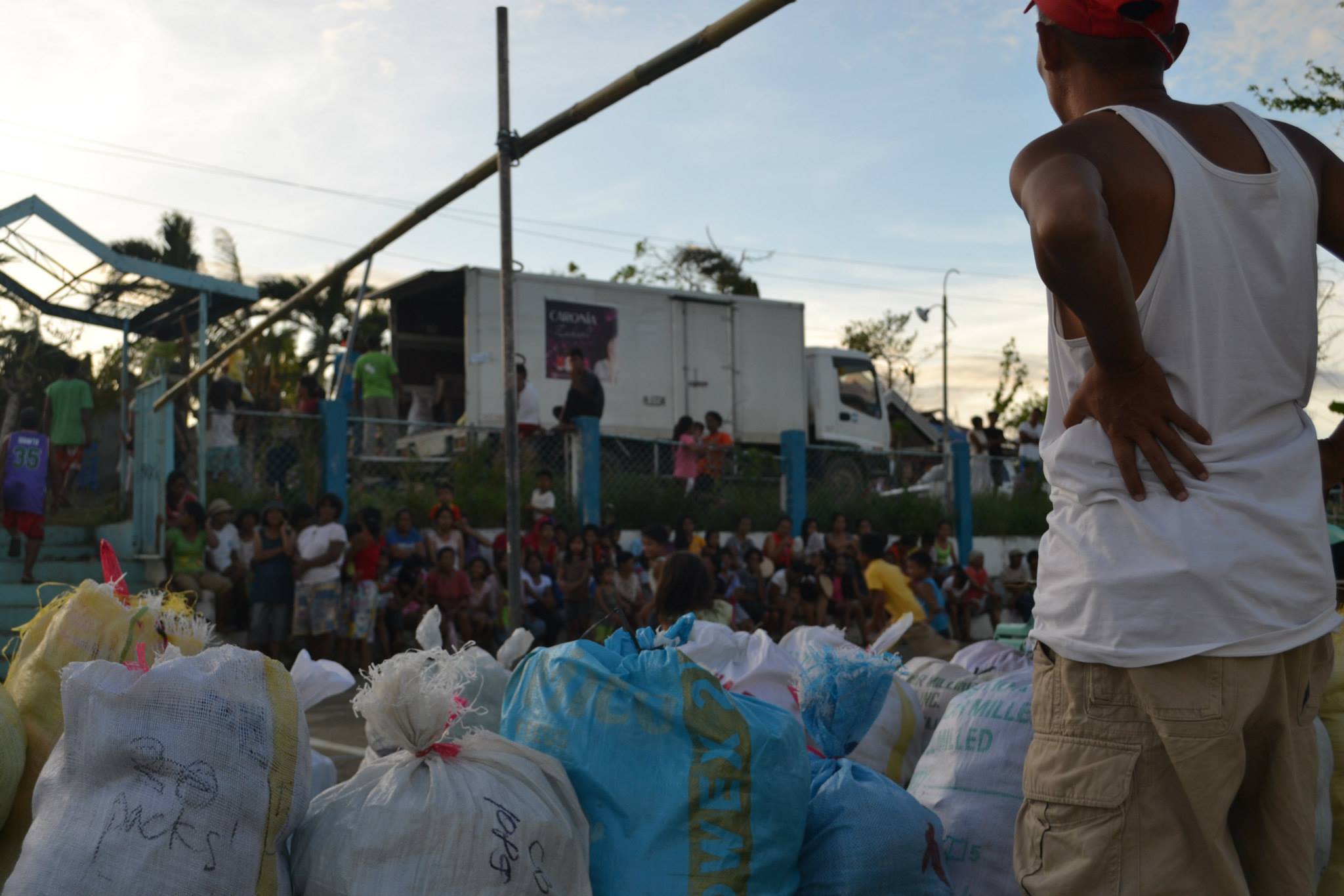It was something that I was torn with for days after Yolanda: Should I reschedule my trip to Johannesburg, and instead, return to the Philippines, or stick with the original plans? Reason #2 of HowStuffWorks' "Ten Worst Things to Donate After a Disaster" echoed deeply. I reminded myself that I didn't have any skills, and that it would be wiser to use the money I'd spend on airfare and give it to a non-profit (with skilled workers and volunteers already in place, who are much more familiar with the situation on the ground). My parents hail from the parts of Iloilo province that weren't greatly affected by Yolanda, so there was no substantial reason for me to check up on them. But then I received a message from my mother a week after the typhoon. My lola had passed away. At this point I had no choice. Mom needed me to be in Miag-ao for the funeral. And so I returned to the Philippines. While I was primarily there to attend the funeral, I did spend a couple days shadowing the Iloilo chapter of Gawad Kalinga. I was introduced to Merveen Ortega, the brother of a friend and fellow GK advocate. When we first met just a couple hours after I touched down, it turned out that GK Iloilo didn't have any relief operations planned for the weekend. So, I spent much of the day discussing long-term plans in the reconstruction effort, as well as touring around several GK villages and meeting kapitbahayan - the beneficiaries of the homes.
As we hopped from one site to another, I noticed Kuya Merveen's cell phone was constantly ringing. There were requests for relief packs from five barangays in the far-flung municipalities that took the brunt of the damage in the province. Following up the request was a coincidental call from his companions from the neighboring island at GK Negros Occidental; they had assembled relief packs that were available for distribution. I was finally going to witness where donations go and get a glimpse of an another overlooked part of the Visayas affected by the typhoon.
We departed from the staging area at the GK Peco village, trekked to urban Iloilo City, then on to municipalities whose names I've heard my parents discuss with other Fil-Ams hailing from the same province - names like Leganes, Barotac Nuevo, Anilao, Banate, and Barotac Viejo. One thing that was unique about witnessing the aftermath of the typhoon in Iloilo province is that you saw it gradually in the scenery. Slowly you'd notice that the trees that provided the lush greenery were starting to taper with tree branches holding less leaves, then you'd noticed forests of trees who were bare of anything green, and finally, seeing those trees uprooted, or toppled over homes.
Much of the highway had since been cleared for traffic, but the scars were quite visible. Remnants of power and telephone lines were hanging. There were houses without roofs. There were children along the road, with their arms out in hope of receiving relief from passersby. But one thing that struck me even more was a van that we passed. A family had pulled over and were conducting their own relief operations by distributing goods to residents of a barangay by the highway.
After passing soldiers from the Canadian Force's Disaster Action Response Team (DART) and tackling downed telephone lines in dirt roads, we arrived at our first stop: barangay Odiongan of the municipality of San Dionisio. The barangay itself is in the east coast of the province, and was one of the first in Panay island to be struck by Yolanda. Once we pulled up to the barangay square, I knew that witnessing the damage from storm surge would be hard to avoid. Wreckage, clothing, and trash littered the coastline.
The distribution of goods was done in cooperation with the barangay captains, who were each armed with a checklist to ensure that all families received a relief pack. Children surrounded the square, and several tried to make their way to me and my camera. Some would approach me and giggle whenever they heard my American English, which is something I was accustomed to due to past trips. Admittedly, laughter was comforting to hear this time around. One thing that was sincerely inspiring was to see how many of the residents were in relatively good spirits. I saw this even more as we proceeded to other barangays.
Once the distribution in Odiongan was complete, we crossed into the neighboring Batad where we met with councilman Ernesto Balida, who guided us as we distributed relief goods at four barangays within the municipality. We passed homes with white camping tents alongside them, probably distributed by the Canadian Forces or one of several NGOs. The locations of barangays that requested relief packs seemed relatively distant from the highway, and required a fair amount of time traversing through more dirt roads and downed lines. One of them was Alapasco, a remote barangay deep within the mountains that sat next to a reservoir of the same name.
Alapasco was the epitome of a village that could easily be forgotten in the initial rush of relief distribution. Getting there required us to leave our supply truck, and transfer packs earmarked for that barangay into a smaller truck that was otherwise used as an open-air ambulance to transport patients from these distant quarters of Batad. The trees that covered the mountains leading to and surrounding Alapasco were no more, leaving behind a barren terrain of fallen limbs and bare branches.
It was in Alapasco that a quote from Viktor Frankl, a psychiatrist and Holocaust survivor, seemed to resonate with me:
"We who lived in the concentration camps can remember the men who walked through the huts comforting others, giving away their last piece of bread. They may have been few in number, but they offer sufficient proof that everything can be taken from a man but one thing: the last of the human freedoms — to choose one’s attitude in any given set of circumstances, to choose one’s own way."
Throughout the trip, the cynic in me was prepared to see the worst of humanity, but instead I saw the best of it. We often hear of the likes of Pilipino hospitality, but I never knew of its resilience before this trip. The residents of the barangays that we helped seemed to have a justification to succumb to despair, and seek self-loathing; instead, they greeted us with the sort of friendliness that puzzled even US Marines when they participated in relief operations for Typhoon Ketsana (Ondoy) a few years ago.
I made it back in Miag-ao in time for my lola's funeral. With little time to mourn and reminisce, I walked into the room where her casket rested and greeted Lola with the same backpack that I lugged around during the relief operations, just hours prior. But after weeks of running to fundraisers across Oahu, catching up with classes, and then finding out of my lola's passing, it finally hit me: I had just spent Thanksgiving weekend in the Philippines.
My family hasn't celebrated this particular holiday since my brother's passing, and I've since used the extended weekend to travel to some far-off land. If anything, I certainly am thankful for the ability to travel as much as I can. But hearing of the things that we should be thankful for while saying grace before digging into that Thanksgiving dinner—things like the warm, fresh food we have, the roof over our heads, our good health—never echoed so much until I tagged along with GK Iloilo during this relief operation.
Witnessing situations such as how organized and patient the residents of affected the barangays were, while they waited until we distributed relief goods, really placed things in perspective for me. Meanwhile, images of Black Friday shoppers flooding stores back home played in the back of my mind. My experiences witnessing this relief operation really did bring being thankful to a whole different level, a level that I wouldn't have imagined from the comforts of indulging in a turkey dinner.








